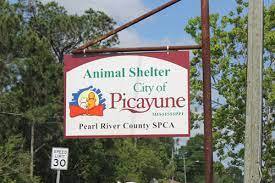Forecasters tell residents along Gulf and East coasts to expect a busy hurricane season
Published 5:20 pm Tuesday, May 22, 2007
With hurricane season about to get under way, residents of coastal areas are watching the forecasts and hoping for a repeat of last year’s mild season.
Already two leading storm experts have called for a busy hurricane season.
The official government forecast is due out Tuesday.
After the battering by storms Katrina and Rita in 2005 there were widespread fears last summer of another powerful storm striking, but the unexpected development of the El Nino climate phenomenon helped dampen conditions.
The El Nino has ended, however, leaving the potential for more tropical storms threatening the Gulf and East coasts.
El Nino is a warming of the tropical Pacific Ocean that occurs every few years. The warm water affects wind patterns that guide weather movement and its effects can be seen worldwide. In El Nino years, there tend to be fewer summer hurricanes in the Atlantic Ocean.
Earlier this month Philip Klotzbach, a research associate at Colorado State University, and Joe Bastardi, the chief hurricane forecaster for AccuWeather Inc., said they anticipate a more active storm cycle this year.
Almost as if to underscore their comments, a subtropical storm formed off the southeast coast and became Andrea, the first named storm of the year, well before the June 1 official beginning of hurricane season.
Hurricane season ends Nov. 30, but the strange season of 2005 ran over into late December, as well as using up all the planned alphabetical names, forcing storm watchers to switch to the Greek alphabet to continue naming storms.
Last year, there were just 10 named storms in the Atlantic and none made landfall in the United States.
Klotzbach and his colleague at Colorado State, William Gray, predict a “very active” season this year with 17 named storms, including nine hurricanes.
Bastardi called for fewer storms but agreed 2007 would be more active than usual. He expects 13 or 14 named storms, six or seven of which will strike the U.S. coast.
Bastardi said the Texas Gulf coast is twice as likely to be hit as in an average year and Florida appears four times as likely.
Katrina easily became the costliest hurricane in U.S. history with damage estimated by the National Hurricane Center at more than $80 billion. Indeed, of the 30 costliest hurricanes in this country’s history, four occurred in 2005.
Katrina displaced 1992’s Andrew, at just over $48 billion, as the top storm, while other 2005 storms ranked are Wilma, No. 3, at $21 billion; Rita in 9th place with damage of nearly $12 billion and, ranked 30th, Dennis at $2 billion.
With a death toll topping 1,500 Katrina is also the third deadliest in U.S. history, following the 1900 hurricane that hit Galveston killing 8,000 to 12,000 people and a 1928 storm that claimed at least 2,500 lives in Florida.
On the Net:
National Hurricane Center: http://www.noaa.gov
Colorado State: http://typhoon.atmos.colostate.edu/
AccuWeather: http://home.accuweather.com/



